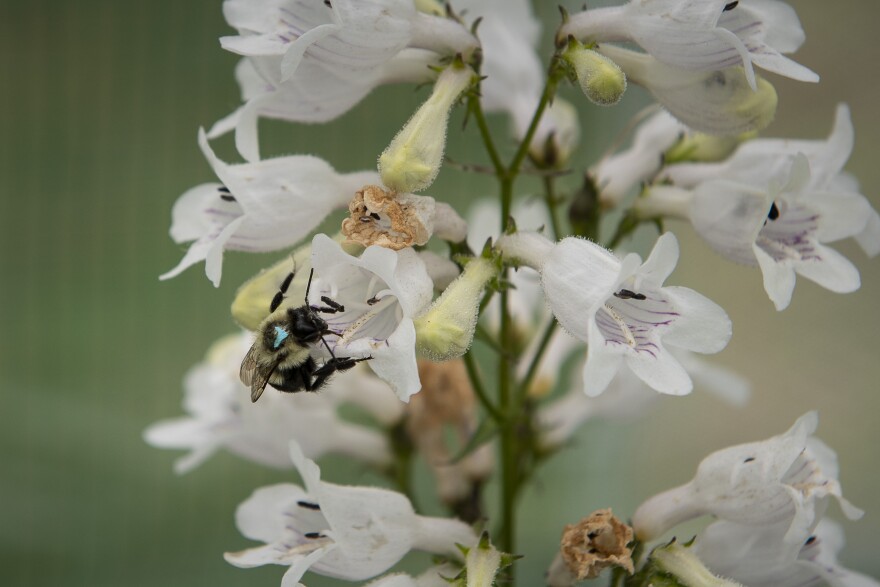As some bumblebee populations decline across New England, researchers wanted to find out which kind of flower is less likely to transmit a common disease. That could help people figure out what to plant.
UMass Amherst Researcher Jennifer Van Wyk said her team presented the bees a range of flower shapes and sizes, and then got creative in tracking infection.
"We coated their pollen in bright blue paint and they ate it," she said. "And so in about 24 hours, their feces start showing up like bright blue under UV light. It was a really fun study.”
When bees pollinated flowers with shorter petals, such as the foxglove, their poop fell outside the flower. That meant other bees that entered the flower would not pick up the same infection.
The pathogen they were studying is called Crithidia bombi, which Van Wyk said affects about 80 percent of wild bumblebees in New England.
Another study is looking at whether a mix of different flower species can reduce disease.
But Van Wyk said disease is just one reason bee populations are declining, along with habitat loss, pesticides and global warming.
Research that helps one species can trickle down to others, she added.
“You conserve the habitat for birds, and the bees do great as well," Van Wyk said. "So if I can find and make some recommendations for how we can plant beautiful wildflower gardens to support bees, I think it will have very positive impact on the rest of our wild animals around us.”


